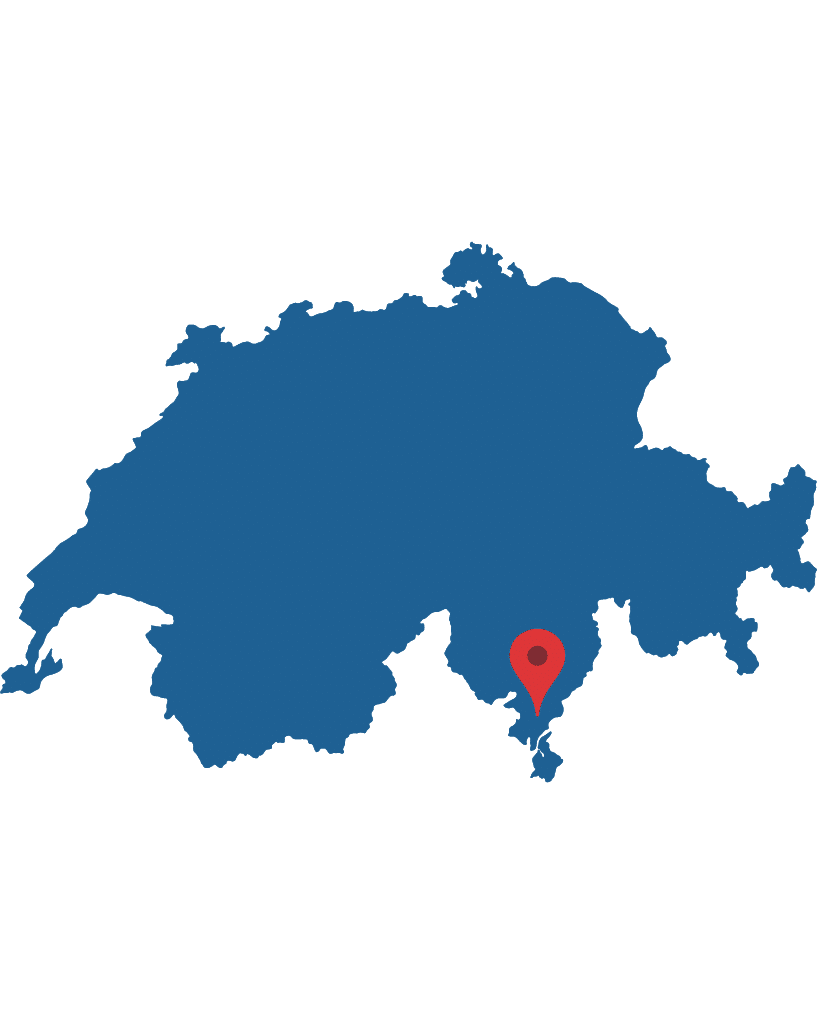Location
Massagno, Switzerland
Key Partners
Lead: Azienda Elettrica di Massagno (AEM)University of Applied Science and Arts of Southern Switzerland (SUPSI) Hive Power (HIVE)QUE Technologies (QUE)
Main Solutions
Identification of flexibility productsImplementation of demand response initiatives Reservation of flexibility assets for DSOsEnhancement of congestion management

Description
The Swiss demo site is taking place in the urban Motta District in Massagno, a suburban local Energy Community (EC), with the addition of a district heating plant located in Capriasca.
All the prosumers in the aforementioned urban district belong to the AEM distribution network (local DSO) and are served by a 630 kVA substation, which is located in the neighborhood. Additionally within the urban district, there is a PV plant with a total installed capacity of 59 kWp (55 MWh of annual production) on the roof of the elderly care home in order to serve the needs of the buildings (first to the elderly care home, then to the rest of the buildings) and then any additional electricity is injected by the grid. Last but not least, A V2G-ready EV charging column (DC, 10 kWe) together with a car-sharing vehicle (Honda e – 35.5 kWh of electric storage) is also part of the community and can be used both as flexibility and as a battery storage solution. The pilot site also leverages two 11 kWe public charging stations for EV that are available to the citizen, increasing the e-mobility aspect of the site.
The Swiss demo site consists also of a biomass-based district heating plant in the municipality of Capriasca, outside of Motta district. The annual total thermal energy production is around 2’300 MWh, and the thermal power is 550 kWth for the main wood-chip boiler. The plant serves a mixed range of customers, such as recreational facilities, education institutions, commercial and residential buildings.
The primary objective of the pilot site, supported by the REEFLEX project, is to demonstrate and implement innovative solutions for optimizing energy usage and enhancing flexibility within the Motta District. This includes increasing self-consumption of locally generated renewable energy, minimizing reliance on grid-supplied electricity, and effectively integrating Distributed Energy Resources (DERs) into the existing energy infrastructure through Demand-Side Management (DSM) strategies. These efforts aim to enhance overall energy efficiency, reduce carbon footprint, and contribute to the sustainable development of the district while fostering a flexible and resilient energy ecosystem.
Innovations and Technological Advances
Integration of advanced smart grid solutions to enable efficient energy management and optimisation.
Implementation of proactive demand response strategies to manage peak loads and enhance grid stability.
Leveraging renewable energy sources such as PV and to increase sustainability and reduce environmental impact.
Establishment of a framework that encourages the development of new flexibility assets, considering market design, defining product characteristics, incentivising participation, and potentially reducing the need for grid upgrades within a specified area where the DSO faces flexibility challenges.
Optimisation of the operation of a diverse portfolio of flexible technologies across multiple short-term markets within the European electricity market design. It covers a wide spectrum of activities related to flexibility management, market participation, grid operation optimisation, and resource utilisation across short-term markets. It aims to create a more responsive, adaptable, and efficient electricity market landscape by leveraging diverse flexibility resources in (near) real-time and short-term trading scenarios.

Contact Information
Demo Site Leader: Riccardo, Toffanin, rtoffanin@aemsa.ch
-
Spain
The demonstration in Spain is taking place mainly in Zaragoza and the surrounding area (Aragon region in the North-East of Spain) and a secondary demonstration will take place in Asturias , Northern Spain (Check Map). With a sizeable portion of its population concentrated in its capital city, Zaragoza, and a sizeable industrial and service sector, Aragon has a high energy consumption rate. The rest of Aragon is mostly rural with a relatively dispersed population and a lot of renewable energy plants. All energy users and prosumers should be brought into flexible markets to help with the integration of these renewable sources. On the other hand, the secondary demonstrator (cluster #3) represents other side of Spanish consumers: big industrial energy demanders. For this reason, the Spanish demonstration site includes all types of energy consumers and prosumers i.e., office (cluster #1 and cluster #2), industrial buildings (cluster #3) and residential (cluster #4).
-
Greece
The Greek demo-site is located in the city centre of Thessaloniki and is composed of a set of 50 residential buildings, 3 energy retail stores and one large commercial facility managed by WVT as utility company together with INNO as energy efficiency services provider. Therefore, the whole demonstration area will represent a common EU neighbourhood and will aim at obtaining real experiences on how EU citizens can participate in and facilitate the deployment of flexibility services supporting the grid operators.
-
Bulgaria
Energy Consumption for ABILIX servers only – 35 MWh/y. Around 10 GWh/y for the whole DataCenter. Evenly distributed with no Seasonal peaks for servers. Cooling electricity consumption is generally 66% lower in Q4/Q1 than in Q2/Q3. Zero emissions (Green energy certificates from the energy utilities supplying power to the Data Centers, mainly fed by nuclear energy). Energy storage around 100 Кwh of batteries